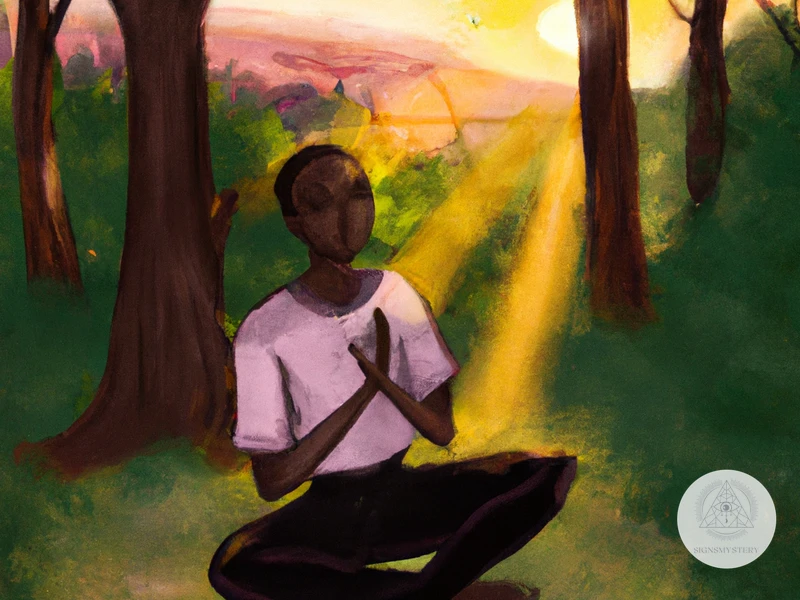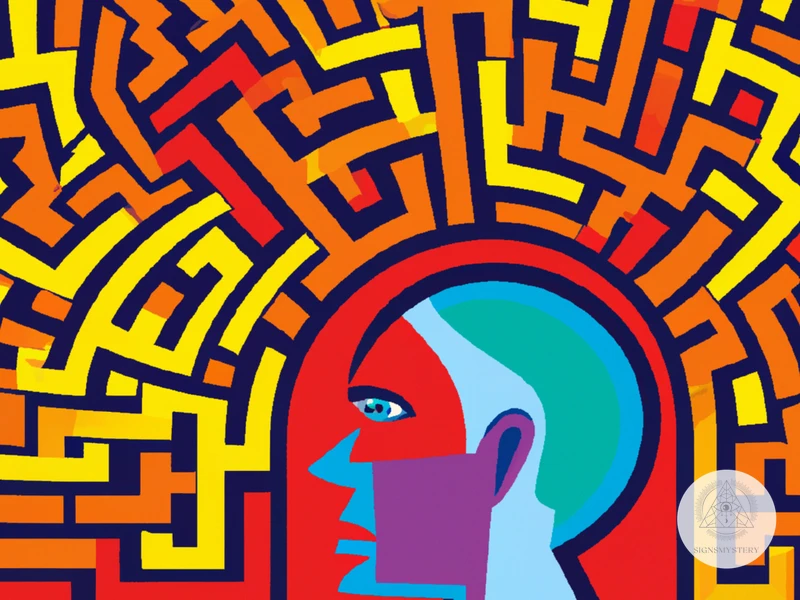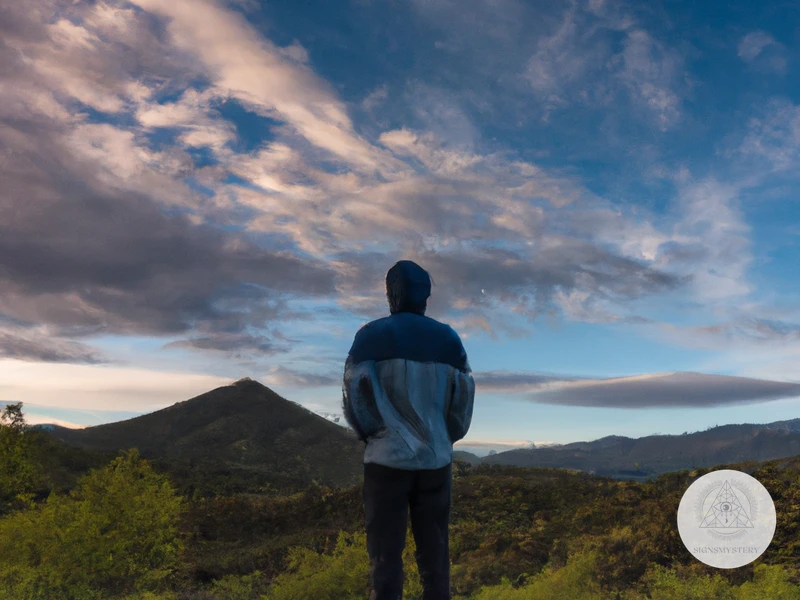Embarking on a vision quest is a powerful experience that involves going out into nature to seek answers, clarity, and spiritual guidance. However, the journey doesn’t end when the quest is over. The real work begins during the integration phase, where seekers must take time to reflect, process, and make sense of their experiences. Here’s a step-by-step guide to help you navigate post-quest integration. From creating a supportive space to connecting with nature, we will explore various strategies to help you integrate your insights and realizations in a way that’s meaningful and transformative.
What is a Vision Quest?
Vision Quest is an ancient tradition that has been practiced for centuries by different cultures around the world. It is a spiritual and personal journey that involves going out into nature and spending a certain amount of time alone, without food or water. During this time, the individual seeks a deeper understanding of themselves and their purpose in life. The vision quest is seen as a rite of passage and is often used to mark important transitions such as puberty, marriage, or a new career.
Each vision quest type has different goals and areas of focus. Some focus on self-discovery, while others may be more focused on connecting with spiritual guides, animal spirits, or ancestors. There are also different types of vision quests such as a sweat lodge vision quest or a fasting vision quest. Each type may have different requirements and steps to follow, so it’s important to prepare accordingly.
One of the most important aspects of a vision quest is the presence of an animal spirit guide. These guides can provide insight, protection, and guidance during the vision quest. Each animal has a specific meaning, and it’s common for individuals to connect with one or more animal spirit guides during their quest. You can learn more about the meanings of animal spirit guides in our previous article.
While the typical vision quest steps can vary depending on the individual and the culture, there are a few common elements. These include finding a sacred place in nature, fasting, setting intentions, and spending time in solitude. The quest is usually preceded by a period of preparation and followed by a period of integration.
It’s also important to note that there are many myths surrounding vision quests, such as the idea that it’s a dangerous or painful experience. These myths have been debunked by those who have actually experienced the journey.
Why is Integration Important?
Integration is the vital process of bringing back all the insights and lessons learned during the Vision Quest, into our daily lives. It’s the bridge that connects the profound experience of the Vision Quest to the practical and mundane aspects of our lives. Without integration, the wisdom and insights gained on the vision quest can be lost or even become overwhelming. Here are some reasons why integration is essential:
| 1. Grounding | Integration allows you to ground the spiritual insights and bring them down to the physical realm. This helps to prevent the insights from becoming theory and staying in the realm of the abstract. True value is realized when they are put into action in our lives. |
| 2. Healing and Transformation | Integrating our experiences can also help us to heal and transform. When we integrate these experiences, insights, and lessons, we transform our ways of being and bring a deeper sense of self-awareness to our lives. |
| 3. Insights into Problems | One of the main reasons why people go on a Vision Quest is to gain insights into a particular problem or issue. Integration allows us to bring back these powerful insights and put them into practice. This can help us to overcome problems that previously seemed insurmountable. |
| 4. Clarifying Life’s Purpose | An important aspect of integration is gaining clarity about our life’s purpose. During the Vision Quest, people may have profound insights into what they want to do with their lives. Integrating these insights can help bring focus and direction to our lives. |
| 5. Avoiding Spiritual Bypassing | Integration helps us to avoid the trap of spiritual bypassing. This is where we use spiritual concepts to bypass difficult emotions or deny painful feelings. Integrating our experiences ensures that we don’t ignore or deny these emotions. Instead, we learn to use our spirituality as a tool to work with them. |
Integration is important because it empowers us to come back into the world with a sense of purpose, direction, and clarity. Integration allows us to bring the spiritual insights gained on the Vision Quest into our everyday lives and transform in meaningful ways. Without integration, the profound wisdom learned during the Vision Quest can be lost, and the quest can become simply a memory.
Preparing for Integration

Before diving into post-quest integration steps, it’s important to take some time to reflect on your journey. Ask yourself questions: What themes emerged for you during your quest? What emotions did you experience? What insights did you gain?
Journaling is a useful tool for processing these reflections. If you can’t put it into words, try drawing or painting your experience instead. This can help bring insights to the surface.
After returning from the wilderness, it’s important to create a supportive environment for yourself. This can include things like:
- Cleaning and decluttering your living space
- Surrounding yourself with comforting objects, like crystals or plants
- Scheduling time for self-care activities, like meditation or massage
Remember to honor your need for rest during this time, as it can be physically and emotionally exhausting to go on a vision quest.
Maintaining continuity with the rituals and practices you started during your quest can help anchor the experience and keep you connected to the insights you gained. This can include things like:
- Making a gratitude list each day
- Practicing yoga or meditation in the morning
- Engaging in a daily journaling practice
These practices can help you cultivate a sense of presence and reverence in your everyday life.
Reflect on Your Journey
To fully integrate the lessons and experiences gained from a vision quest, it is important to take time to reflect on your journey. This means setting aside a dedicated time and space to process everything that happened during your quest.
Reflecting on your journey can involve meditation, journaling, or talking with a trusted friend or therapist. It can be helpful to ask yourself questions such as: What did I learn about myself? What were the most challenging moments? What were the most profound moments of insight or connection to nature?
It’s also important to consider any symbols or visions that you may have encountered during your journey. These symbols can offer great insight into your subconscious thought patterns, and can help guide you toward greater self-awareness and personal growth.
By taking the time to reflect on your journey, you can gain a greater understanding of yourself and your place in the world. This, in turn, can help you integrate the lessons learned during your vision quest into your daily life in a meaningful way.
Click here to learn more about vision quests and shamanism.
Create a Supportive Space
Creating a supportive space is essential to successful integration after a vision quest. This involves setting up an environment that allows you to slow down and connect with yourself, and feels safe and nurturing. Here are several ways to create a supportive space for integration:
| 1. Quiet and Clean Space | Make sure your space is quiet, clean, and comfortable. Eliminate any distractions and unnecessary accessories. Clean and organize your room before returning home from your vision quest. |
| 2. Plants and Nature | Bring in plants and natural objects to help ground your energy. Plants can help purify the air and create a calming atmosphere. Consider adding artwork or items you collected on your vision quest to remind you of your experience, such as stones, feathers, or leaves. |
| 3. Comfortable Seating | Choose comfortable furniture to sit and relax on. You may want to add cushions or blankets for additional comfort. Make sure your seating allows for meditative practices such as deep breathing, stretching, or yoga. |
| 4. Soothing Scents | Use essential oils or scented candles to aromatize your space. Lavender and cedar are known for their calming qualities, while peppermint and rosemary can stimulate clarity and focus. |
| 5. Soft Lighting | Choose soft lighting that creates an ambiance of relaxation. Avoid harsh or bright lighting that can interfere with your vision and peace of mind. |
| 6. Write in a Journal | Allocate a special place in your space for journaling. Writing in a journal can help you process your thoughts and feelings from your vision quest, track your progress, and set intentions for your integration. |
Take time to personalize your space and make it your own. This can help create a sense of safety and provide comfort in the challenging times of integration.
Continue with Rituals and Practices
Continuing with rituals and practices is an essential part of integration after a vision quest. Throughout your quest, you may have established specific practices and rituals that helped you connect with your inner self and the natural world. It is essential to continue these practices to solidify the insights you have gained.
If you have not created any rituals, it is never too late to start. A ritual can be as simple as taking a few deep breaths each morning or as intricate as a multi-day ceremony. It is important to find a balance between what works for you and what you can consistently commit to.
If you are not sure where to start, consider revisiting some of the practices that were part of your initial vision quest steps. Reflect on which activities resonated with you and brought you a sense of peace and connection. These practices can include meditation, prayer, yoga, drumming, or spending time in nature.
Participating in regular ceremonies and ceremonies like sweat lodges, medicine wheel teachings, or fire circles can help us maintain a connection to the spirit world and the lessons from the quest. Gatherings like these offer a safe space to share your experiences with like-minded individuals and receive support.
Continuing your practices is about carrying the thoughts and feelings of the quest into your everyday life. They serve as reminders of the profound truths and lessons we experienced during our quest, and they help us stay on track in this physical dimension. So, make sure you continue to honor yourself and your journey after your vision quest through rituals and practices.
Post-Quest Integration Steps
After completing a vision quest, it’s important to take time to integrate the experience back into your daily life. Here are some post-quest integration steps to help you fully absorb the insights and realizations you gained during your quest.
The first step in post-quest integration is to slow down and give yourself time to absorb what you’ve learned. Consider taking a break from your usual routine and spending time in solitude or quiet reflection. This will help you process your thoughts and feelings without distractions.
As you reflect on your vision quest experience, take note of any key learnings or insights that stand out to you. These may be related to your personal growth, relationships, or life purpose. Identifying these can help you create a roadmap for integrating these learnings into your daily life.
Writing down your insights and visions is an excellent way to solidify them in your mind and begin to take action on them. Consider starting a journal to record your thoughts and experiences. You can also use this to record any symbols or images that came up during your quest.
Connecting with nature is a powerful way to ground yourself and integrate your vision quest experience into your life. Spend time outdoors, go for a hike, or sit by a body of water. This will help you feel connected to the natural world and gain perspective on your quest experience.
Creating art or participating in ceremony can help anchor the experience of your vision quest into your daily life. Consider creating a mandala or painting that represents your experience, or participating in a ceremonial gathering with others who have completed a vision quest.
Sharing your vision quest experience with trusted friends or community members can help you solidify your insights and integrate them into your daily life. This can also provide a sense of support and connection as you navigate the challenges of post-quest integration.
Post-quest integration is a process that takes time, patience, and dedication. By taking these steps to integrate your vision quest experience, you can make the most of the insights and realizations you gained during your quest and continue to grow and evolve on your journey.
Slow Down and Absorb
After a Vision Quest, it can be tempting to jump right back into daily life and try to integrate the experience quickly. However, it’s important to take time to slow down and absorb the insights and lessons gained from the quest. This is a crucial step in the integration process and allows for deeper understanding and transformation.
Here are some suggestions to help slow down and absorb:
| Meditation and Relaxation | Take some time to meditate and relax, allowing the mind and body to process the experiences and insights gained during the quest. This can be done through guided meditations, deep breathing, or other relaxation techniques. |
| Quiet Time in Nature | Spend some time alone in nature, sitting or walking quietly to allow the insights gained in the quest to sink in. The peaceful energy of nature can be incredibly healing and help to integrate the lessons learned during the quest. |
| Journaling | Take some time to write down any thoughts, feelings, or insights gained during the quest. This process can help to organize and integrate the experiences and bring more clarity to the lessons learned. |
| Artistic Expression | Express the insights and lessons gained during the journey through art, dance, or other forms of creative expression. This can help to anchor the experience and make it more tangible in everyday life. |
Remember that this is a time for reflection and introspection. It’s important to give oneself permission to slow down and let the integration process unfold naturally. By taking the time to slow down and absorb the insights gained during a Vision Quest, one can emerge with a deeper understanding of oneself and the world.
Identify Key Learnings
Identifying key learnings is an essential part of integrating after a vision quest. It allows you to distill the essence of your experience and apply it to your everyday life. Here are some steps you can take to identify your key learnings:
- Reflect on your experience: Take some time to remember your journey. What were the challenges you faced? What were the insights you gained? What stood out the most to you during the quest?
- Identify patterns: Look for recurring themes or patterns in your experience. Did certain symbols or images appear more than once? Did you encounter similar obstacles or opportunities throughout your journey?
- Find the deeper meaning: Once you have identified patterns, look for the deeper meaning behind them. What do they represent? What can you learn about yourself or the world from them?
- Take stock of your emotions: Assess how you felt during each stage of your journey. What emotions did you experience? Why did you feel that way? Understanding your emotional responses can help you identify areas of growth and transformation.
- Consider how you can apply your learnings to your life: Once you have identified your key learnings, think about how you can integrate them into your daily life. How can you apply what you learned to your relationships, work, or personal growth?
By taking the time to identify your key learnings, you can make the most of your vision quest experience. It can help you to understand your journey at a deeper level, and provide a roadmap for personal growth and transformation.
Write Down Insights and Visions
One of the most important post-quest integration steps is to write down your insights and visions. This allows you to solidify the experience and reflect on it later. Here are some tips for effectively capturing your experiences:
| Tip | Description |
|---|---|
| Use vivid language | Description is important here. Use descriptive words and details to capture the essence of what you saw, heard, felt or experienced. |
| Write in a stream of consciousness | Don’t worry about grammar or punctuation, just write whatever comes to mind. This will help you access your subconscious mind and capture the fleeting insights you may have had during your quest. |
| Write down recurring themes | If you keep seeing the same image or hearing the same message, write it down. It may be a symbol or message your subconscious mind is trying to convey to you. |
| Use a journal dedicated to your quest | Having a special place to write down your insights and visions can help you create a sense of continuity and connection to the experience. Use a notebook or journal dedicated to your quest. |
Remember, writing down your experiences will not only help you remember the important insights you gained during your quest, but it will also help you integrate the experience more fully into your life.
Connect with Nature
Connecting with nature is an essential part of post-vision quest integration. Spending time in nature helps to ground and center the mind and body, as well as offer a sense of peace and clarity. Here are some ways to connect with nature after a vision quest:
| 1. Spend Time Outside | Go for a walk or hike in the woods, sit by a river or lake, or even just spend time in your backyard. Being outside in nature can help you feel more connected to the world around you and provide a calming sense of stillness. |
| 2. Connect with Natural Elements | Find a tree to sit with, hold a rock or crystal, or spend time with a body of water. These natural elements can help to ground you and connect you to the earth. |
| 3. Practice Mindfulness | During your time in nature, practice being present and mindful. Focus on your breath and the sensations in your body as you take in the sights and sounds around you. |
| 4. Perform a Ritual | Create a ritual that involves an aspect of nature, such as collecting stones from a river or offering gratitude to a tree. This can help to deepen your connection and gratitude for the natural world. |
| 5. Incorporate Nature into Your Home | Bring elements of nature into your home, such as plants, crystals, or natural materials like wood and stone. This can help to create a sense of peace and connection even when you’re indoors. |
Remember, connecting with nature doesn’t have to be a grand or complicated gesture. Even small moments spent in nature can help to ground and center you, and offer a deeper connection to the world around you.
Anchor the Experience through Art and Ceremony
One of the most powerful ways to anchor the experience of a vision quest is through art and ceremony. These activities help to solidify the memories and insights gained during your journey, providing a tangible reminder of your experience.
Art: Consider creating art to represent your journey. This could be a drawing, painting, sculpture, or any other form of artistic expression that resonates with you. The act of creating art can be a meditative and introspective process, allowing you to connect with your experience on a deeper level. Display your artwork in a prominent place in your home as a reminder of your journey and to keep the experience present in your mind.
Ceremony: Ceremony can also be a powerful tool for anchoring your experience. This could be a simple ceremony, such as lighting a candle, or something more elaborate like a fire ceremony. The act of performing a ceremony can help you to integrate your experience on a spiritual level, providing a sense of closure and completion. If you
Subscribe to Our Newsletter
Sign up to receive the latest news and updates.
Here are some ideas for art and ceremony to help anchor your vision quest experience:
| Art | Ceremony |
| Create a vision board | Light a candle |
| Paint a picture of a key insight or vision | Perform a fire ceremony |
| Make a collage of photos from your journey | Plant a tree or other plant to symbolize growth and transformation |
Remember, the goal of anchoring the experience through art and ceremony is to create a physical reminder of your journey that will help you integrate the lessons you learned into your daily life. Don’t be afraid to get creative and come up with your own ideas for art and ceremony that resonate with you personally.
Share with Community
Sharing your experiences with the community can be a powerful way to integrate the insights and transformations you gained from your vision quest. Here are some ways to share your journey with others:
- Organize a group sharing circle or ceremony where everyone can express their feelings and insights from their individual quests. This can help create a supportive and safe space for everyone involved.
- Invite a friend or family member to go on a journey of their own, or share your experiences with them to inspire them to take the next step in their own spiritual journey.
- Create or join a community that focuses on spiritual growth and self-discovery. This can be a great way to connect with like-minded individuals who understand and value your experience.
- Consider writing about your experience and submitting it to a blog or publication in the relevant field. Not only can this help others learn from your journey, but it can also serve as a powerful reminder of the lessons you learned during your quest.
Remember that while it can be difficult to share such personal experiences with others, doing so can lead to a greater sense of connection and understanding within the community. And who knows – your story may inspire others to embark on their own journey of self-discovery and transformation.
Common Challenges During Integration

Common Challenges During Integration
After a vision quest, the integration process can be challenging. Here are some common obstacles that seekers may encounter:
| Feeling Overwhelmed or Disconnected | It’s normal to feel a sense of overwhelm or disconnection after a powerful experience like a vision quest. Seekers may struggle to connect with their daily lives and the people around them. To overcome this, it’s important to create a supportive space and continue with rituals and practices that ground them, like meditation or journaling. |
| Facing Resistance from Daily Life | Returning to the demands of daily life can be jarring after the solitude and introspection of a vision quest. Seekers may encounter resistance from their job, family, and social obligations. It’s important to maintain the momentum of the quest by respecting and prioritizing the insights and visions gained. This may mean setting boundaries, making lifestyle changes, or reevaluating priorities. |
Integration is a continuous process that involves traversing both the peaks and valleys of everyday life. Seekers should remind themselves that they have the power to integrate their quest and enact change. It takes patience, perseverance, and commitment.
Feeling Overwhelmed or Disconnected
It is common to feel overwhelmed or disconnected after a Vision Quest, as the experience can be intense and transformative. It is important to remember that this is a natural part of the integration process and that these feelings can often be temporary.
To mitigate these feelings, it is essential to continue to take care of yourself. This means getting enough rest, eating nourishing foods, and drinking plenty of water. It may also be helpful to spend time in nature, meditate, or engage in other spiritual practices that help you feel grounded and centered.
If you are struggling to integrate your experience, consider reaching out to a trusted friend, family member, or mentor for support. You may also want to schedule a follow-up session with your guide or therapist to discuss your experience and explore any lingering emotions.
Remember that the integration process is unique to each individual and there is no one-size-fits-all solution. Be gentle with yourself and trust the journey. With time, you will find your way back into a sense of balance and harmony.
Facing Resistance from Daily Life
Integrating the insights and revelations gained from a vision quest can be challenging, especially when faced with resistance from daily life. Here are some common challenges that individuals may face and strategies for working through them:
| Challenges | Strategies |
|---|---|
| Lack of Time | Find small pockets of time to reflect on your journey, even if it’s just a few minutes a day. Setting priorities and saying no to non-essential commitments can also create more space for integration. |
| Discomfort in Sharing | Sharing the experience with others can be challenging, especially if they do not have a strong understanding of vision quests or spiritual experiences. Find a trusted friend or mentor who can support you in your integration process, and communicate your needs and boundaries around sharing. |
| Feeling Helpless or Stuck | If you’re struggling to integrate your experience, consider seeking out a therapist, counselor, or spiritual leader who can help you process and make sense of what you’ve learned. |
| Resuming Old Habits | Coming back to daily life after a vision quest can be overwhelming, and it’s easy to fall back into old patterns and habits. Developing a self-care routine and a plan for how to integrate what you’ve learned into your daily life can help you stay grounded and focused. |
Remember that each individual’s integration process looks different, and there is no right or wrong way to integrate the lessons of a vision quest. Trust your own journey and take the time you need to fully integrate and embody the changes you wish to make.
Closing Thoughts
One of the most important things to keep in mind after a vision quest is that the integration process is ongoing and can take time. It’s important to give yourself grace and patience as you continue to process and integrate your experiences. Remember, there is no right or wrong way to integrate your experiences, and everyone’s journey will look different.
Tips:
- Allow yourself to take breaks and rest when needed.
- Don’t expect integration to happen overnight.
- Stay open and curious about what comes up for you during the integration process.
Another important aspect of post-quest integration is committing to change and action. It’s one thing to have insights and realizations, but it’s another thing entirely to take that wisdom and apply it to your daily life in a meaningful way.
Tips:
- Identify concrete steps you can take to implement changes in your life based on your insights and learnings.
- Hold yourself accountable by sharing your intentions with a trusted friend, mentor, or community.
- Use your experience as motivation to continue growing and evolving as a person.
Remember, a vision quest is a powerful and transformative experience, but it’s what you do with those experiences that truly matters. By taking the time to integrate your experiences and commit to actionable change, you can continue to live a more purposeful and fulfilling life long after your quest has ended.
Remember that Integration is a Process
Remember that integration is a process: It’s important to keep in mind that integration is not a one-time event, but rather an ongoing process. It can take weeks, months, or even years to fully integrate the lessons and insights gained from a vision quest. Don’t expect to have all the answers right away or to feel completely transformed immediately after the quest. Remember, growth and transformation take time and patience.
It’s also important to acknowledge that the integration process may not always be smooth sailing. There may be setbacks, challenges, and difficult emotions that arise along the way. It’s important to stay grounded in your practices and remain committed to your growth and healing journey.
One helpful way to approach the integration process is to break it down into smaller, achievable goals. Take time to reflect on the insights and lessons you gained from your vision quest and identify specific areas of your life where you would like to make changes or improvements.
Set realistic goals for yourself and create a plan of action for achieving them. Whether it’s practicing meditation daily, spending more time in nature, or committing to healthier eating habits, taking small steps towards your goals can help you stay motivated and focused on your growth and healing journey.
Remember, integration is not a destination, but an ongoing journey. Be gentle and patient with yourself as you navigate the ups and downs of post-quest integration. Stay committed to your growth and healing journey and trust that the insights and lessons gained from your vision quest will continue to guide you along the way.
Commit to Change and Action
After completing a vision quest and going through the process of integration, it is essential to commit to change and take action towards fulfilling the insights and visions gained during the experience. This is the part where you can put all your realizations and lessons learned into action.
Make a plan for the changes you want to implement. Take some time to figure out what kind of changes you want to make and how you can integrate them into your daily life. Break down the changes into smaller steps, and create a practical plan that includes timelines, milestones, and resources required.
Stay accountable and motivated. One of the ways to ensure you remain accountable for the changes you want to make is by sharing your plans with a trusted person or mentor who can support and motivate you throughout the process. Additionally, create reminders and regular check-ins for yourself to stay on track. This will help you remain focused on your goals and not lose sight of the changes you want to make.
Take action and adapt as you go. Once you have a plan in place, take action towards your desired changes. Remember that change is a process that requires consistently putting effort and being open to adapt as you go. Celebrate your progress and be patient with yourself as you work towards the changes you want to see.
Here is a table summarizing the steps towards committing to change and action:
| Steps towards Committing to Change and Action |
|---|
| Make a plan for the changes you want to implement. |
| Break down the changes into smaller steps and create a practical plan that includes timelines, milestones, and resources required. |
| Stay accountable and motivated by sharing your plans with a trusted person or mentor, and create reminders and regular check-ins. |
| Take action and adapt as you go. |
By committing to change and action, you are taking the necessary steps towards realizing the insights and visions gained during the vision quest. Remember to be patient, celebrate your progress, and stay focused on your goals. The change you seek is within reach as long as you take consistent action and stay committed to the process.
Frequently Asked Questions
What is the history of Vision Quests?
Vision Quests have been used as a sacred ritual by various indigenous cultures for centuries, as a way to connect with oneself and the spiritual world.
How long does a typical Vision Quest last?
A typical Vision Quest may last anywhere from 1 to 4 days, depending on the individual’s needs and traditions.
Is a Vision Quest dangerous?
When done properly and under the guidance of a trained professional, a Vision Quest is not dangerous. However, it is important to take necessary precautions such as hydration, proper nutrition, and safely navigating the natural environment.
What are some benefits of a Vision Quest?
Some benefits of a Vision Quest include clarity of purpose, personal growth and transformation, increased mindfulness and connection to nature, and a deeper understanding of oneself.
How can I find a reputable Vision Quest guide?
One way to find a reputable guide is to ask for recommendations from trusted spiritual communities or through online research and reviews. It is important to find a guide who is experienced, trained, and respects the tradition and practices of the Vision Quest.
What are some common post-quest integration challenges?
Common challenges include feeling overwhelmed or disconnected, facing resistance from daily life, and navigating the process of integrating new insights and changes into daily life.
Can I do a Vision Quest alone?
While it is possible to do a Vision Quest alone, it is highly recommended to have the guidance and support of a trained professional for safety and proper integration.
How can I prepare for my Vision Quest?
Some ways to prepare include setting intentions, reflecting on personal goals and desires, physically and mentally preparing the body, and gathering essential materials for the quest such as clothing, food, and shelter.
What should I do if I experience discomfort or fear during my Vision Quest?
It is important to communicate with your guide and speak your truth. Your guide can provide support, guidance, and reassurance. It is also helpful to have coping tools such as breathing exercises and mindfulness practices.
How can I bring the lessons from my Vision Quest into my daily life?
Some ways to integrate the lessons include regularly connecting with nature, incorporating the use of art or ceremony to anchor the experience, seeking support from a community, and committing to actions aligned with the insights gained from the quest.










